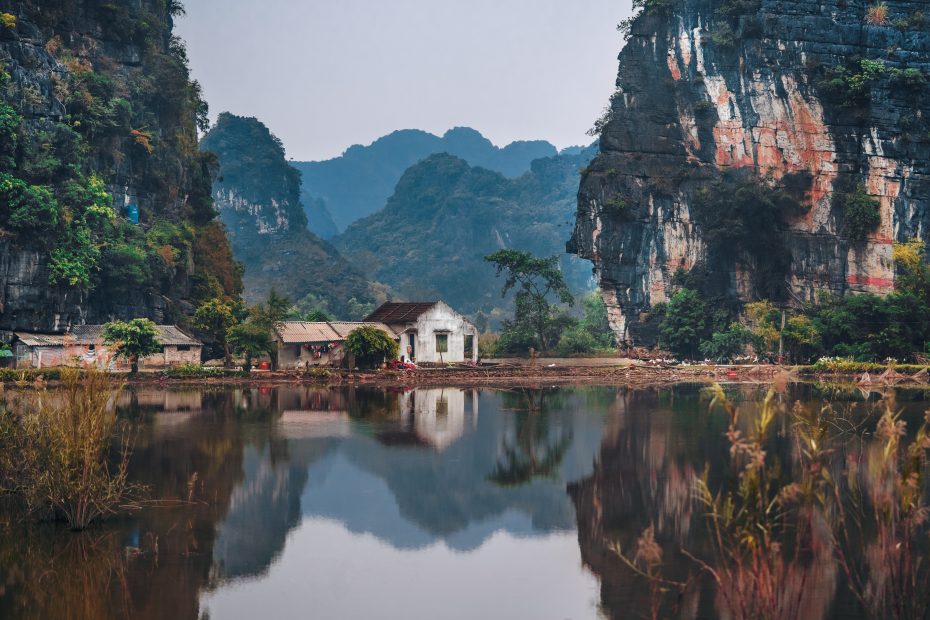Table of Contents
Introduction
Nestled along the coast of northeast Vietnam, Halong Bay is truly a majestic sight to behold. With its emerald waters dotted with over 1,600 limestone islands and islets, it’s easy to see why this UNESCO World Heritage Site has captured the imagination of travelers for decades. Halong Bay translates to “Bay of the Descending Dragons,” a fitting name for the towering rock formations jutting out of the sea. In this article, we’ll explore the history, geology, wildlife, top attractions, conservation efforts, and travel tips for this iconic natural wonder.
History and Legend
According to Vietnamese legend, Halong Bay was created by a family of dragons sent to defend the land from sea invaders. The dragons spit out jewels that turned into island formations upon hitting the water. Historically, Halong Bay provided refuge, transportation, and livelihoods for local fishing communities. During the Vietnam War, villagers sought shelter in the grottos while military ships hid between the islands. Today, Halong Bay continues to enchant visitors with its mystical genesis story and rich human history.
Geology and Formations
The islands of Halong Bay began forming over 500 million years ago when the area was submerged by ocean waters. Over millions of years, tectonic activity slowly pushed the limestone rock upwards, exposing towering cliffs, caves, and arches. The bay contains over 1,600 islands and islets, the smallest being just an isolated rock jutting out of the sea. The larger islands contain hidden caves, sinkholes, and lakes within their interior limestone. Rising over 100 meters above the water, stalagmites, stalactites, and column formations have developed over millennia. This dazzling karst topography is definitively Halong Bay.
Biodiversity
While the geology steals the show, Halong Bay harbors rich biodiversity across its islands and waters. Within the islands, tropical dense forests thrive with species like black squirrels and macaques. Rare plant species include Halong fan palm andYeoo plant. In the bay, over 200 species of fish swim through the emerald waters, alongside mollusks, crustaceans, and coral reefs. Protected species include the red-shanked douc langur, Asiatic black bear, and pangolin. Birdlife is also abundant, including kingfishers, kites, and black-tailed gulls gliding between the islets.
Activities and Attractions
A dream destination for adventurers, Halong Bay offers countless activities:
-
Cruising – The best way to experience the bay is by cruise boat, weaving between islets and soaking in the scenery. Cruises range from day trips to overnight journeys with kayaking, caving, and island hikes.
-
Kayaking – Paddling through the emerald waters offers an up-close perspective of the karst topography surrounded by the bay’s tranquility.
-
Swimming – While not recommended year-round, swimming between the islands can be an unforgettable experience.
-
Hiking – Jagged trails wind across the island interiors, leading to panoramic lookouts and hidden gems. Cat Ba Island has great hiking opportunities.
-
Caves – Well-lit caves like Hang Sung Sot offer stunning stalagmites, stalactites, and rock formations carved over millennia.
-
Fishing Villages – Scattered across islands and floating on the water, these villages showcase traditional Vietnamese life.
Conservation Efforts
With growing popularity, Halong Bay faces environmental threats from tourism, climate change, and pollution. Key conservation efforts include sustainable tourism practices, marine waste management, monitoring biodiversity impacts, and supporting local communities. In 1994, Halong Bay was listed as a UNESCO World Heritage Site. Vietnam has continued to strengthen protection and preservation policies to safeguard Halong Bay for future generations.
Travel Tips
To make the most of your Halong Bay experience:
-
Visit between February and April when the weather is cool and dry. Summer (June-August) brings heat, humidity, and crowds.
-
Take an overnight cruise to fully immerse yourself amidst Halong’s magic. Day trips offer a taste, but 2-3 days is ideal.
-
Hire kayaks and explore smaller grottos inaccessible by big boats. Paddling allows more intimate encounters.
-
Pack sun protection, light layers, motion sickness tablets, and mosquito repellent.
Conclusion
With breathtaking karst geology, rich biodiversity, and mythical origins, Halong Bay truly encapsulates the natural wonder of Vietnam. Its shimmering waters and soaring islands never cease to amaze visitors. Yet despite its splendor, Halong faces environmental threats that require sustainable tourism and conservation practices to protect. When visiting this UNESCO marvel, we must tread lightly and honor Halong’s captivating beauty for generations to come. The dragons may no longer protect these islands, but we can by respecting this magical place.
FAQs
Where is Halong Bay located?
Halong Bay is located in northeast Vietnam, in the Gulf of Tonkin near the border with China. It spans across Quang Ninh Province and Halong City.
How was Halong Bay formed?
Halong Bay formed over 500 million years ago when the area was flooded by ocean water. Tectonic shifts slowly pushed the underlying limestone upwards, exposing islands and rock formations.
What is there to do in Halong Bay?
Top activities include cruising between islands, kayaking into grottos, hiking nature trails, exploring caves, visiting floating villages, swimming, and rock climbing.
When is the best time to visit Halong Bay?
The cooler dry season from February to April offers the best weather. Summer brings hot humidity, storms, and crowded cruises.
How can I help protect Halong Bay?
When visiting, support sustainable tourism operators, don’t litter, don’t touch coral, and respect protected areas. Reducing your environmental footprint helps preserve Halong Bay.
